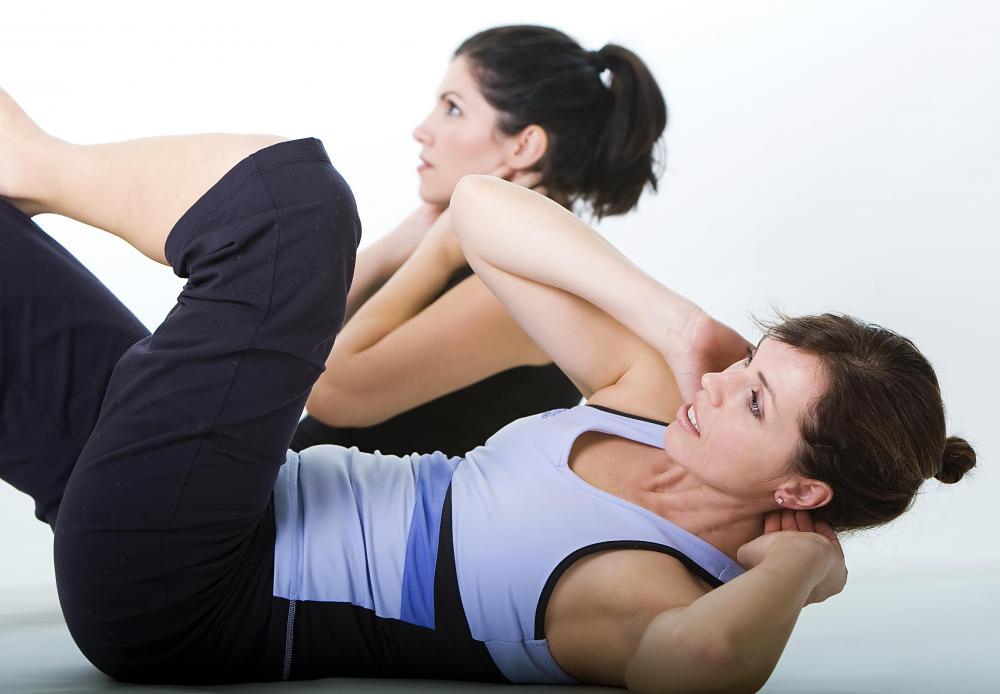At WiseGEEK, we're committed to delivering accurate, trustworthy information. Our expert-authored content is rigorously fact-checked and sourced from credible authorities. Discover how we uphold the highest standards in providing you with reliable knowledge.
What are the Different Types of Plyometric Equipment?
Plyometrics, also called plyo, is a type of exercise designed to improve both speed and strength. It features a variety of specialized plyometric equipment which help to enhance the workout and routine. Plyometrics does not use weighs, balls, ropes, or machines. Instead, plyometric equipment includes different types of boxes, specialized shoes, base and jump trainers, and mats to soften the landing.
Probably the most popular piece of plyometric equipment is the plyometric box. This can be an individual box with varying heights, or a variety of progressively sized boxes. These boxes are used for step aerobics, standing box jumps, side jumps, ski jumps, and other exercises that promote lower body and core strength. The power box is similar, but uses a spring mechanism to push back on the legs, adding more pressure to the jump or step and making for a more challenging exercise.

Plyometric training shoes are some of the most unique items found in any plyometric equipment collection. These shoes feature springs which allow for more bounce on each step; this causes the runner or walker to have to work harder, making for enhanced training for sports or simple cardio routines. These shoes can be used in conjunction with plyo step up boxes, which act like aerobic steps, or with hurdle sets, which can be used like track and field events to enhance a cardio workout.

Other plyometric equipment focuses on core and base training, which is good for track runners, skiers, golfers, and a variety of other athletes. These pieces include power base trainers, which can be attached to the hips of two different people as they run in opposite directions, causing the runners to work in resistance to each other. Power jumpers can be attached to the hips and then to the ground to allow for extra weight when taking springing jumps into the air.

Runway mats can also act as plyometric equipment hurdles, providing different obstacles in a short pad. Box sets can be placed in order of ascending or descending height to provide for jumps or steps of different heights and challenges. Lateral boxes and wall boxes can be used for side to side movement, allowing a person to propel onto a box with a side step. A final piece of plyometric equipment can be found in plyo mats, which can be used to make exercise a little smoother and safer.
AS FEATURED ON:
AS FEATURED ON:













Discuss this Article
Post your comments